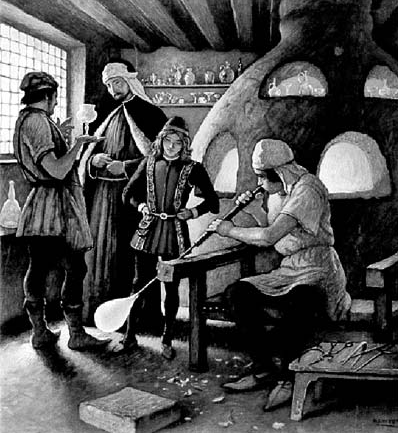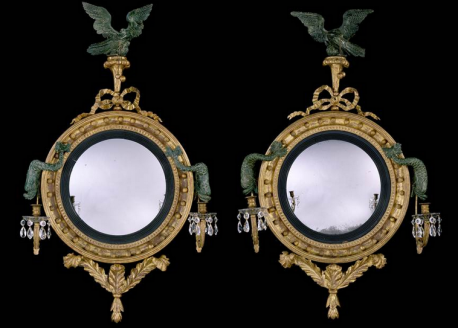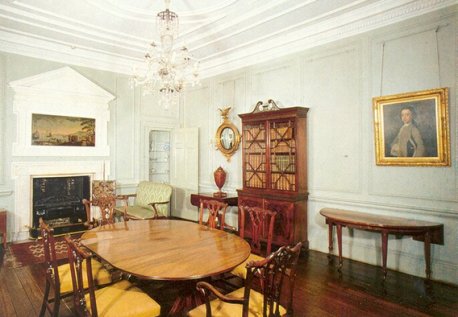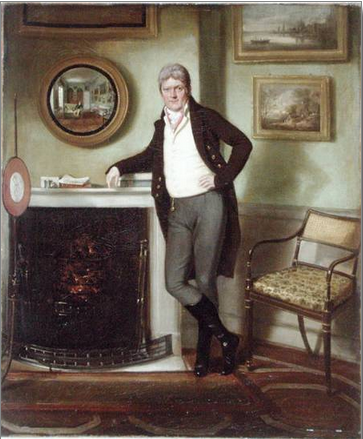Most people are familiar with the convex mirror these days – just how it came about may not be so well known.
The convex mirror originated in Europe with the development of glass blowing in the Medieval-Renaissance period. The glass blower created a small glass bulb, the inside of which would be coated with molten lead or tin, making it reflective. Once cooled, the bulb was cut into smaller pieces for use as hand and pocket mirrors.
By the 18th century, convex mirrors would become highly decorative, adorning the homes of rich Europeans. The French are attributed with the creation of the Empire convex mirror. However, Regency England’s wealthy society, hugely into fashion and decoration, adapted this form – propelling it to a whole new decadently, decorative level. Stylised plant representations, delicate ornamentation, candle arms and pendant chains were popular embellishments. And, gilding was de rigueur.
A pair of early 19th century convex mirrors, boasting opposing eagle cresting on ribbon tied bow pediments and carved painted dolphins to the sides issuing scrolled candle arms with brass nozzles and glass drip pans hung with droplets, the pendant apron with three clasped feathers. Yours – at a snip – for £50,000-£100,000!
The gilded circular convex mirror became so popular in England that under the heading ‘Mirrors’, in Sheraton’s ‘Cabinet Dictionary’ (1803), they are the only style of mirror listed.
Playing an important role in the running of the Regency household, convex mirrors were often placed above the dining room sideboard, allowing the butler to discretely keep an eye on dinner guests while keeping his back turned.
They were also highly functional in a dimly lit interior owing to their light-magnifying qualities.
Portrait of George Henckell in his Study, c.1800 (oil on canvas), English School, (19th century) / © Bourne Gallery, Reigate, Surrey, UK / The Bridgeman Art Library
Without doubt, we have the Georgians to thank for turning the convex mirror, with its humble origins, into the must-have interiors accessory it is today.
At Omelo, we’re channelling our own 21st century version of the decorative convex mirror, strictly without bows or feathers!



